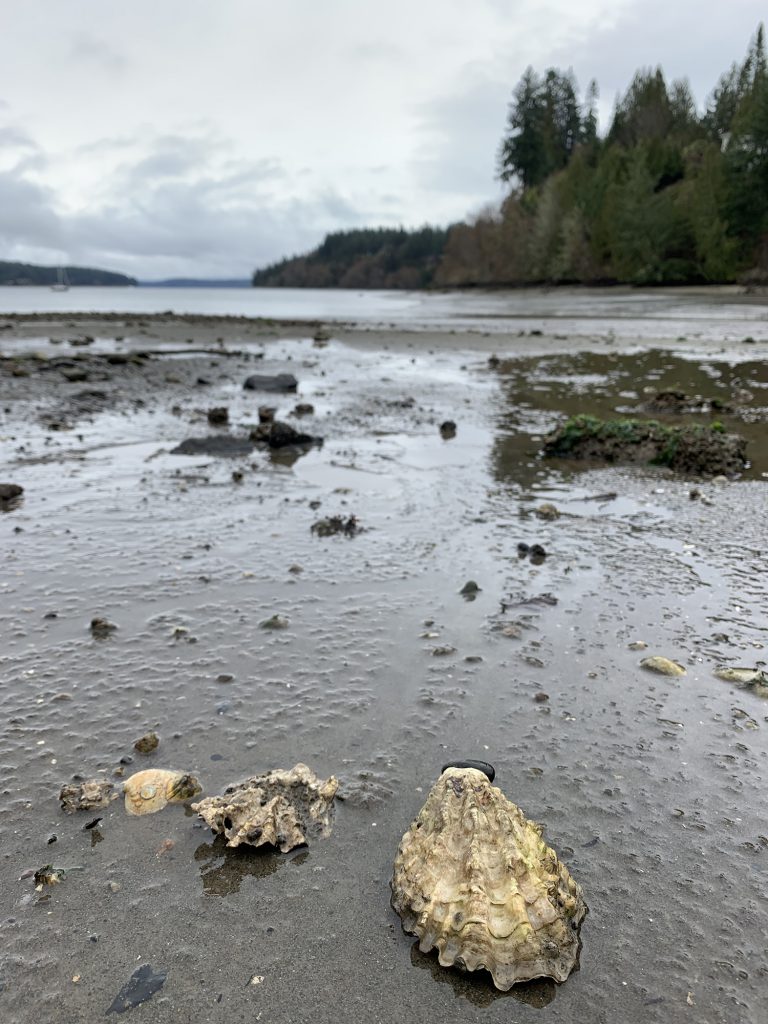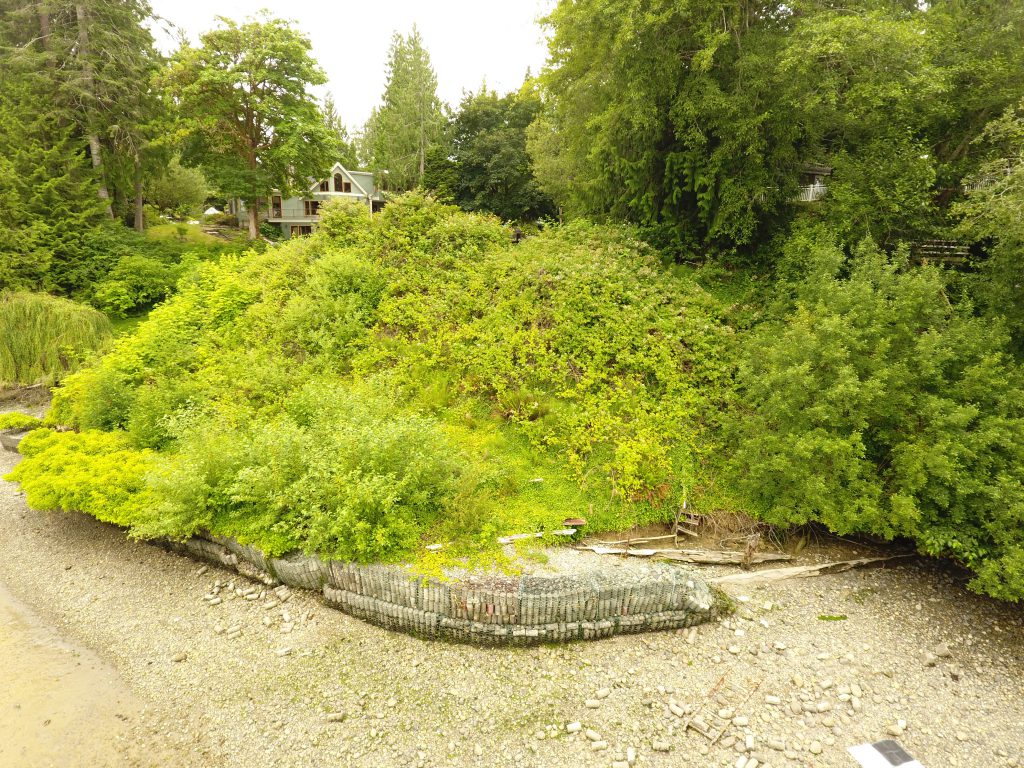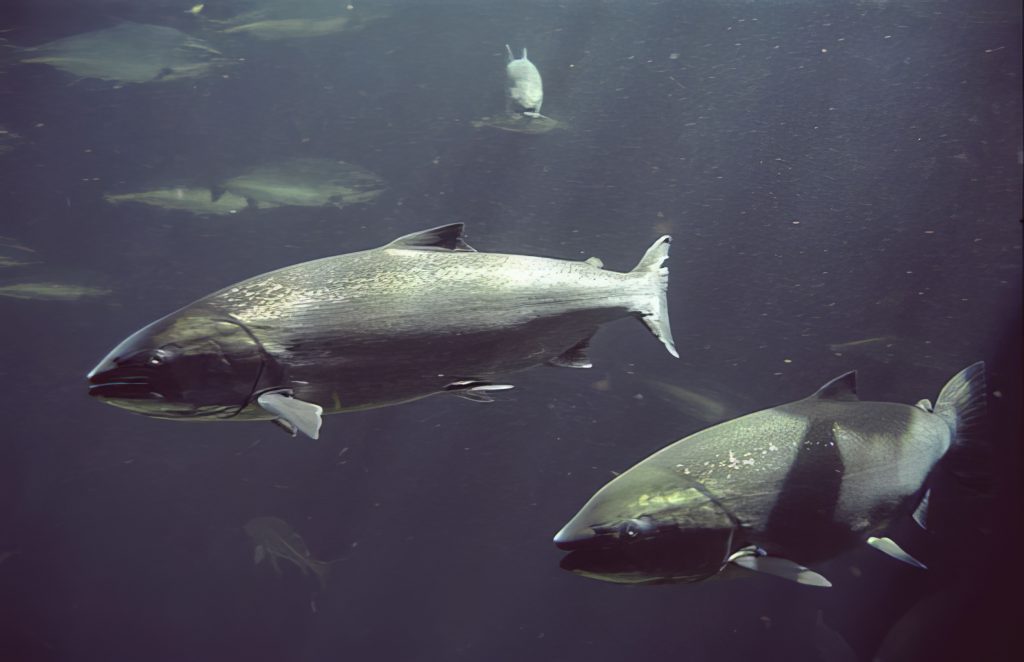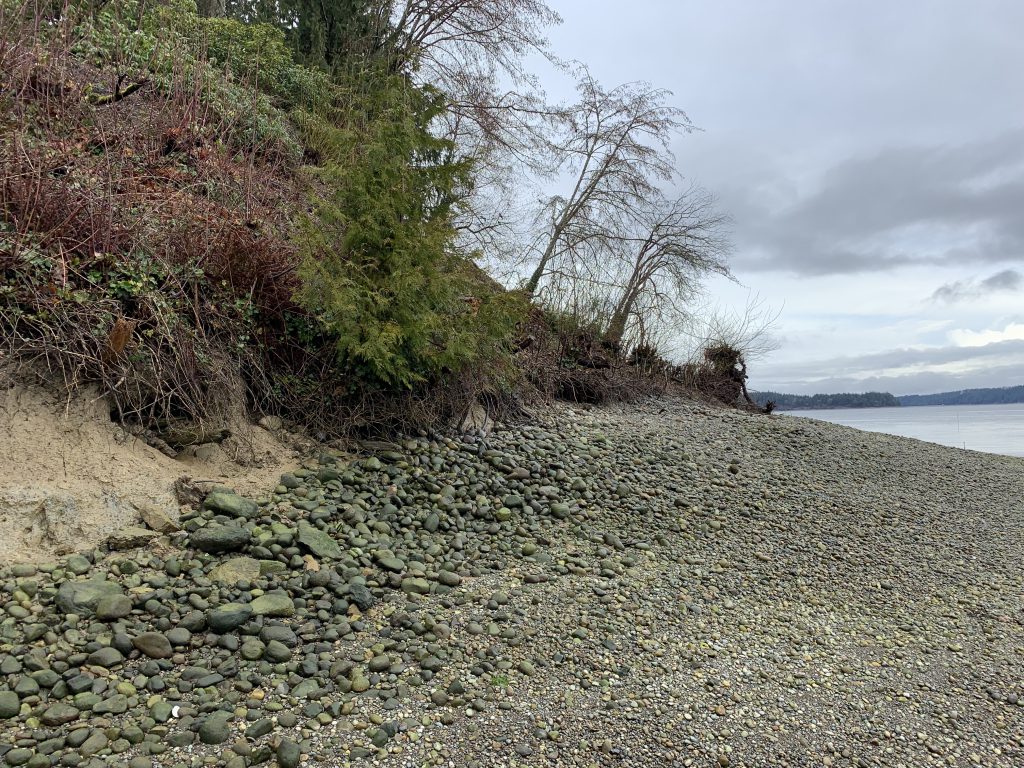By Katie Love, Washington Sea Grant Hershman Fellow for Puget Sound Partnership.

For 35 years, Patrick and Kathryn Townsend have watched the comings and goings of the tides from their living room window in a suburb of Olympia. Water fills the tree-lined cove below their home at high tides and retreats at low tides to expose acres of coastal mudflats rich with biodiversity. Their days are connected to the rhythm of the swells, and this view gives them an excellent vantage point to witness life in and around Puget Sound.
They can watch boats drifting by, neighbors collecting oysters, and river otters swimming to the shore. It also means they see the water from the street running to the Sound through their property, a dam blocking the nearby creek, plastic debris from past commercial shellfish operations, and the effects of failing septic systems. “Where we are, we have a front row seat to many environmental impacts on Puget Sound,” notes Patrick.
Like many coastal landowners, when the Townsends bought their property they inherited a bulkhead, a type of shoreline armoring designed to reduce coastal erosion by absorbing wave energy. The bulkhead at the toe of the bluff on their property was constructed of a wire cage filled with cement cylinders. Over time it started to degrade, and the Townsends considered repair work. Understandably, they didn’t know the unique complexities of shoreline armor and suspected the best course of action was to fix the bulkhead as it was. But their eldest, Max Townsend, had another idea. They had attended a workshop hosted by King Conservation District and learned the importance of native plants and natural shorelines in restoring the integrity of bluff ecosystems. “With Max’s help, we realized there was a better way,” Patrick explains. “So, we came from a point of ‘let’s throw
some concrete at this,’ to ‘let’s restore our property.’”
“We’re not just looking at one part of parcel, but the entire site, to better understand what’s causing the erosion and how we can serve both the landowners and the ecosystem.”
– Jenna Jewett, the lead for Shore Friendly and Small Grants Program at WDFW
With Max taking the lead, they discovered Thurston Conservation District’s branch of
Shore Friendly, a program developed in 2014 to provide stewardship incentives to reduce
shoreline armoring across Puget Sound. For three years now, the Townsends have been working with the Shore Friendly team to remove the bulkhead and revegetate the shoreline with native plants. Projects like this are crucial to recovering natural processes
in the Puget Sound region and maintaining habitat for fish and wildlife, while also helping landowners manage their property.
Part of the Estuary and Salmon Restoration Program run collaboratively by the Washington Department of Fish and Wildlife (WDFW) and Recreation and Conservation
Office (RCO), Shore Friendly is “a one-stop shop for landowners to address erosion concerns on their property while restoring resilient ecosystems and wildlife populations,” explains Jenna Jewett, the lead for Shore Friendly and Small Grants Program at WDFW. This voluntary and highly collaborative program reduces the amount of armoring along Puget Sound shores by working with private landowners and local lead organizations, such as Thurston Conservation District, to remove or avoid bulkheads, control invasive species, and manage drainage. Their work is described as process-based restoration, which focuses on restoring natural processes and creating structure on the landscape to get a functional response, such as, in this case, healthy fish, wildlife, and habitats. “We’re
not just looking at one part of parcel, but the entire site, to better understand what’s causing the erosion and how we can serve both the landowners and the ecosystem,” says Jewett.

While shoreline armoring such as bulkheads and seawalls were originally constructed
to protect coasts from erosion, it is now understood that it is largely unnecessary around Puget Sound, where coastal erosion in many areas can be controlled by other means. However, over 25 percent of the region’s shorelines are still armored. That armoring negatively impacts the surrounding area by reducing the complexity of the shoreline, disrupting the land-sea interface, and altering crucial habitats particularly important for salmon.
“Beach ecosystems are an important component of the mosaic of nearshore habitats that support juvenile salmonid growth and survival,” explains Tish Conway-Cranos, nearshore senior scientist at WDFW. “Every year, juvenile salmon migrate from the watersheds where they are born into the estuarine waters of Puget Sound and ultimately to the marine waters of the Pacific Ocean. Intact beach habitats can provide foraging opportunities for juvenile salmonids as well as refuges from predation during their time in Puget Sound.” Many of Puget Sound’s cultural, economic, and ecological icons depend on healthy and harvestable salmon populations. By removing shoreline armoring and restoring beach habitats on which salmon depend, Shore Friendly is contributing to the overall resilience of Puget Sound, its communities, and its economy.
“Beach ecosystems are an important component of the mosaic of nearshore habitats that support juvenile salmonid growth and survival.”
– Tish Conway-Cranos, nearshore senior scientist at WDFW.
Since 57 percent of Puget Sound beaches are on private properties, improving nearshore habitat is largely up to individuals. Shore Friendly therefore has focused on working with landowners, giving them the opportunity to greatly impact ecosystem processes. Shore Friendly program lead Jenna Jewett believes in the power of voluntary participation and the huge benefits that can be attained by working with private landowners. “Landowners
willing to avoid or remove bulkheads provide a triple benefit of protecting their property, reducing shoreline armoring overall, and restoring habitat for fish, wildlife, and communities.” However, she acknowledged that removing bulkheads and seawalls is a highly complex and technical process, requiring extensive knowledge, money, and time. It can be overwhelming for a landowner to manage the permitting process, grant cycles, and workload required.
That’s where Shore Friendly comes in. They provide educational opportunities, free erosion-assessment site visits, and technical and financial incentives such as permit coordination and funding when armor removal opportunities arise. They create a unique plan for the given site and landowner needs, understanding that each property
requires an individualized approach. Patrick Townsend described how Shore Friendly experts managed the whole process for his property, from assessing options for their parcel and taking ongoing measurements, to filling out grants and permits, to hiring
a local crew to do the physical labor. They also proactively met with neighbors to collaborate on any downstream impacts, coordinated with Tribes as these projects
impact Tribal treaty rights and hired nearby businesses to support the local economy. “We didn’t have to do any of that work, we just had to sign the paper. It’s like having a resource team suddenly appear over the horizon, and it’s hard to overrate their competence. They’re absolutely critical. I don’t know how else this project would have gotten done.”

Funding for this work comes in part from the Puget Sound National Estuary Program’s Habitat Strategic Initiative Lead (HSIL), a cross-agency team co-led by WDFW and the Washington State Department of Natural Resources (DNR). Shoreline armoring implementation strategy lead for WDFW’s HSIL team Matt Lurie described how this
funding enables Shore Friendly to advance regional goals related to shoreline armoring
and healthy shorelines. “Shore Friendly site visits, education, and assistance programs
geared towards local communities is an incredible example of a scalable approach
using best available science to achieve ecologically friendly shoreline management
solutions in Puget Sound. HSIL is proud to fund and support the growth of Shore
Friendly programs to accelerate outreach and relationship building among our shoreline communities to reduce the impact of hard armor.”
Shore Friendly’s work coordinating across the region with state and federal partners has been further applauded by many members of the Puget Sound recovery community. “Shore Friendly is instrumental to meeting defined goals for Puget Sound restoration and recovery,” explains Kirsten Feifel, director of ecosystem recovery at the Puget Sound Partnership. “Its Program Target provides us with some measurable programmatic goals to help track implementation of the Action Agenda, the region’s shared plan for Puget Sound recovery. Shore Friendly also directly supports Vital Signs such as Marine Beaches, Forage Fish, and Sense of Place. The results of this program demonstrate the impact of collaborative and voluntary action, opening new habitat to support coastal ecosystems and communities.”

Now that the bulkhead is gone, Patrick and Kathryn can walk over coir logs (made of
natural fibers) installed to slow stormwater runoff, down the recently constructed low-
impact steps to the shore, and witness some dramatic and immediate benefits of Shore
Friendly’s work. As gravel naturally spreads through the area, they’ve seen an increase in the number of seaweed and oysters.
Their bank is now stabilized by willows, which will hold the slope in place without compromising their view. Neighbors have expressed interest in starting similar work
on their own properties, with one already working with Shore Friendly on invasive plant removal.
Shore Friendly is facilitating coordination and collaboration to meet on-the-ground needs of landowners, creating a positive feedback loop that will continue to
benefit individuals, communities, and the greater Puget Sound ecosystem. By helping landowners overcome property management barriers, the program inspires others to make positive changes within their reach, sending ripples throughout the region.

